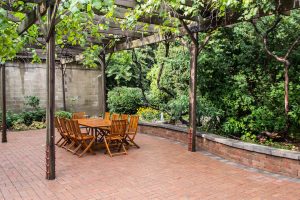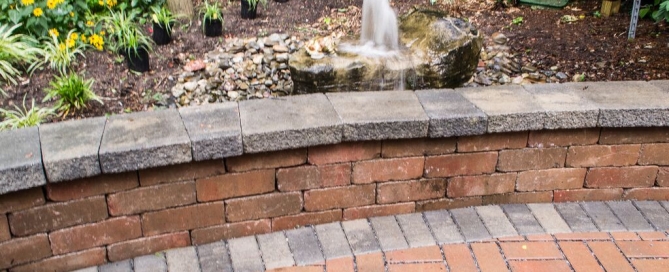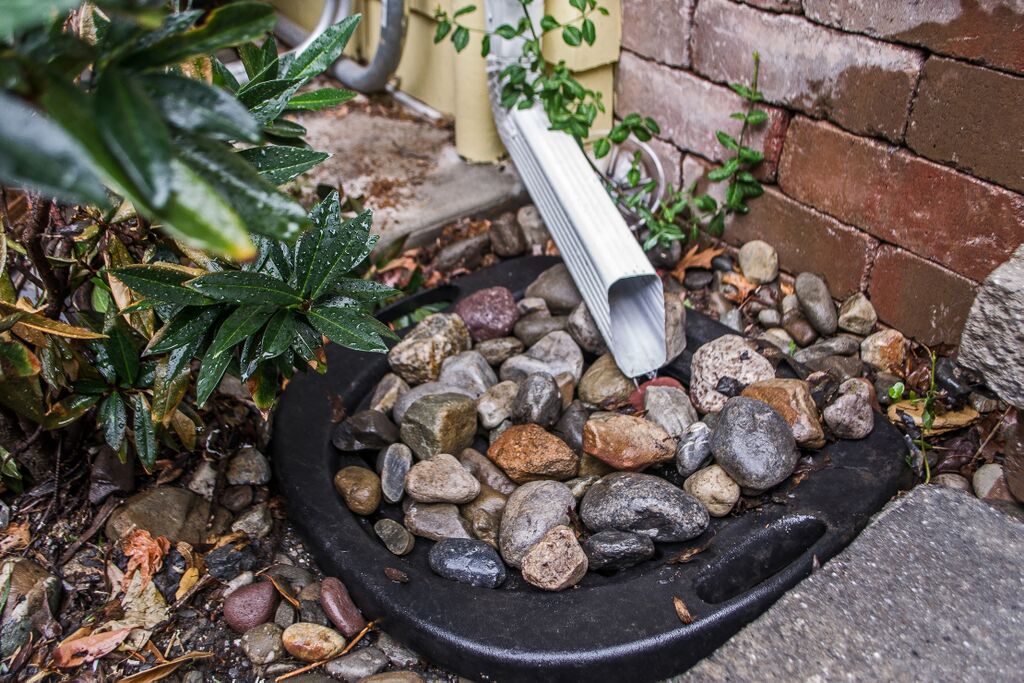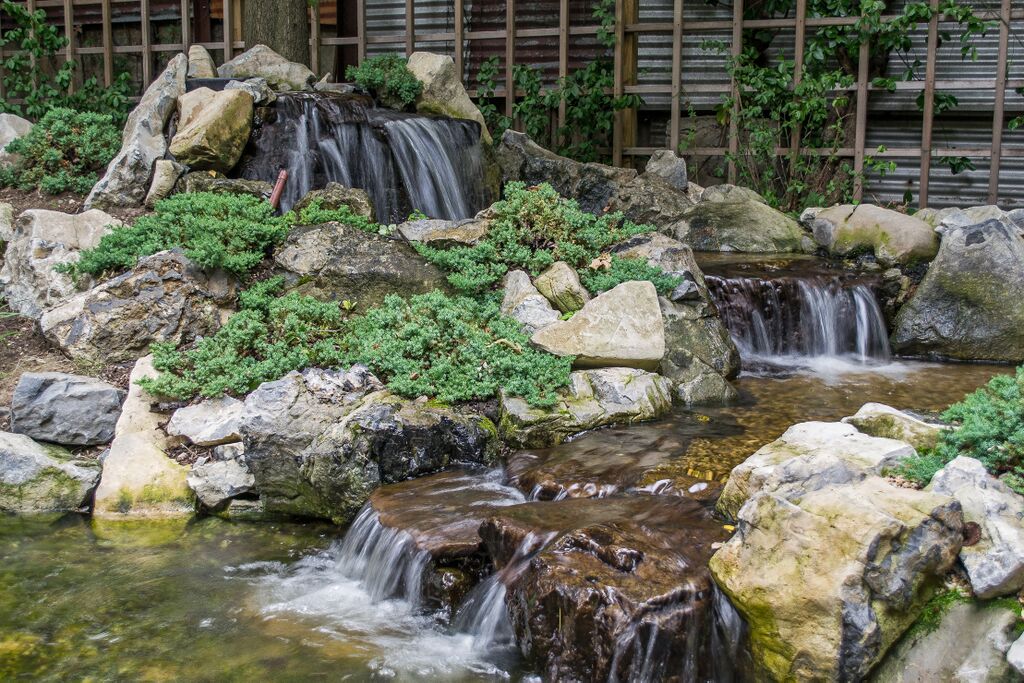Spring 2019 Vacation: Plan a Kid-Friendly Oasis While School’s Out
For Long Island and NY Metro area families, spring vacation is upon us. If you haven’t made plans to travel, or at least planned to be home some of the time, why not involve the kids in helping plan a backyard oasis?
Of course, a backyard oasis that includes, say, a pool or spa etc. will get most kids pretty excited. But should you want to go in a different direction — planning an oasis with their interests in mind — could offer a whole other experience.
Consider this backyard playground we built in Brooklyn awhile ago. The heart of the project is a natural swimming pond instead of a pool. This eco-friendly water feature was constructed initially as a very shallow pond (just 8 inches deep) because at the time the children were young.
This allowed the youngsters to swim and play in safety. However, the pond was also designed/built to grow with them. By installing boulders covered with fabric and gravel at its base, once they got older, we could simply remove these materials, revealing a full-sized pond that could be stocked with koi.
“As children mature,” says Dave Stockwell, “they want different experiences. This plan took that into consideration. Of course, it would still remain a natural swimming pond, but with more aquatic life to study, as well as being able to experience under-water swimming and snorkeling, etc.”
The overall appearance of the pond was that of a secret cove on a desert island.
“We gave it a beach-stye entry,” says Dave. “Plus there’s a rock climbing wall, a pirate-ship-style tree house, rope bridge, swings, exercise rings/bar, and three bubble-rock water features.
Plan It Eco-Friendly!
These Brooklyn parents wanted any project on their property to be earth-friendly. They asked us to capture rainwater for irrigation which we were able to do through our Rainwater Harvesting Division.
“They chose to go two routes,” adds Dave.
“First, rainwater is captured via Techo-Bloc permeable pavers installed in their new patio area. Voids between the pavers were filled with crushed stone permitting rain to pass through the joint spaces. This permits the water to flow down into an underneath layer of bluestone gravel and crushed stone to be filtered.”
Deck and Patio also installed on their home four downspouts to collect nearly three-quarters of their roof runoff.
“This captured rainwater also gets filtered,” says Dave. “Filtered containers screen out twigs and small debris before it is captured in the same underground Aquascape reservoir that holds the rainwater collected by the pavers. Then it’s all recycled for use in irrigation and to top off the backyard pond and waterfalls after any evaporation.”
Notes on Rainwater Harvesting
Using Aquascape products, today’s rainwater harvesting systems capture sufficient rainwater to also wash your car and/or hose down the deck and patio. And when you consider that local Long Island and City water companies frequently charge an incremental rate, based on the amount of water used, capturing all the non-ingestive water you need from rainfall, the lower your rate will be.
Aquascape’s systems are, in fact, a revolutionary design that combines a recirculating decorative water feature — like the bubbling rocks we installed here — with a sub-surface rainwater harvesting collection system.
The clients just enjoy it as a water feature, while the system filters and aerates the stored water to prevent stagnation. An automatic valve we installed kicks in when the water gets low in the pond, waterfalls or streams to replenish them.
This project also included a patio dining area and lounge area where the parents and friends can enjoy the backyard water features as well. But there’s no doubt, the heart of the project was fun for the kids.
So! Consider making this spring vacation an opportunity to plan the perfect oasis for your kids — and maybe even teach them the value of water conservation while you’re at it. Not that kids today need much teaching. They’re the ones often asking us to ‘go green!”













